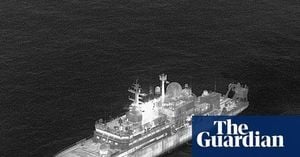On November 19, 2025, the already fraught relationship between Pakistan and Afghanistan reached a new crossroads, as international and regional actors scrambled to address a crisis decades in the making. Russia, stepping into the diplomatic void left by failed negotiations, publicly offered to mediate between the Taliban administration in Afghanistan and Pakistan amid mounting border and security tensions. Albert Khorev, Russia’s ambassador to Islamabad, made this announcement during a meeting at the Pakistan Institute for Strategic Studies, underscoring Moscow’s readiness to play peacemaker in a region grappling with overlapping crises.
Khorev’s words carried both urgency and a subtle rebuke: “Regional tensions are sometimes inflamed by external powers.” According to Atlas Press, he emphasized that Russia and Pakistan share common ground on regional security, especially regarding Afghanistan, and are committed to working together to combat terrorism, foster economic and social development, and preserve peace. Russia’s mediation offer comes on the heels of failed talks between the Taliban and Pakistan in Istanbul earlier this month. In the aftermath, both Iran and Russia began consultations to manage the fast-escalating disputes, with Iran also announcing plans to host a regional meeting focused on the ongoing crisis.
Yet, despite close ties with both Moscow and Islamabad, leaders in Kabul and Islamabad have remained conspicuously silent about the latest border tensions since the Istanbul talks collapsed. This silence—alongside Russia’s diplomatic overtures—has prompted fresh questions about the nature of the dispute and the roles regional powers might play in addressing Afghanistan’s persistent security challenges.
The roots of today’s turmoil are tangled in decades of policy missteps and missed opportunities. As detailed in a Friday Times analysis, Pakistan’s so-called “Strategic Patience” toward Afghanistan—a policy described as a dangerous gamble cloaked in the language of wisdom and caution—has left the country reeling from its own contradictions. The piece pulls no punches, describing the strategy as “nothing more than folly,” a calculated deception that ultimately tore apart Pakistan’s social and national fabric and cost billions of dollars in economic losses.
Pakistan’s Afghan policy, the article argues, was built on a foundation of proxy warfare, religious extremism, and short-term tactical alliances with non-state actors. “Jihad was made a part of the state’s policy, and a harvest of extremism was sown in madrasahs,” the article notes, lamenting the empowerment of groups that now threaten the state itself. The consequences have been devastating: thousands killed in domestic terrorism, a battered economy, and a society caught in the crossfire of a war with no clear end.
When the Taliban swept into Kabul in 2021, Islamabad’s initial optimism quickly faded. The Taliban’s refusal to take action against the Tehrik-i-Taliban Pakistan (TTP)—now reportedly operating with impunity in twenty-four districts of Khyber Pakhtunkhwa—exposed the limits of Pakistan’s influence. Whenever Islamabad raised concerns, Kabul dismissed them as “Pakistan’s internal issue,” forcing Pakistan to respond with air strikes on TTP hideouts in Afghanistan. The message from Islamabad has grown sharper: “Strategic patience is over.”
The current crisis at the Durand Line, the long-disputed border between Pakistan and Afghanistan, has laid bare the failures of Pakistan’s approach. The Friday Times piece warns that the Taliban government, emboldened by new alliances, has “decided to turn the Durand Line into a new battlefront, establish the writ of TTP’s terrorism in the border tribal areas, and then impose a parallel guerrilla war across all Pashtun regions of Pakistan.”
This is not just a geopolitical struggle, but a human tragedy. The article highlights the systematic silencing of liberal and critical voices, the marginalization of universities and intellectuals, and the replacement of dialogue with bullets. “Patriotism was associated with proxy wars and the military narrative, and liberalism or constitutional criticism was equated with treason, which resulted in the shrinking of the civic sphere and the systematic decline of the rule of law,” the piece laments.
For the tribal regions along the border, the cost has been especially steep. Decades of conflict, military operations, and state neglect have left these areas without basic infrastructure, educational opportunities, or economic development. The literacy rate in the tribal districts stands at a mere thirty percent for men and ten percent for women. “The eradication of terrorism is possible not with a gun but with a book,” the article insists, calling for investment in modern universities, technical institutions, and scientific centers as the only path to sustainable peace.
Meanwhile, Afghanistan is looking eastward for new partnerships. On November 19, an Afghan delegation led by Industry and Commerce Minister Alhaj Nooruddin Azizi visited the India International Trade Fair (IITF) 2025 in New Delhi as part of a five-day official visit aimed at strengthening bilateral trade and investment ties. According to Hindustan Times, Azizi’s visit—the first by an Afghan minister to the India Trade Promotion Organisation since 2021—comes as Afghanistan seeks to diversify its trade relationships after border closures with Pakistan disrupted exports.
Neeraj Kharwal, Managing Director of the India Trade Promotion Organisation, briefed the Afghan delegation on opportunities for future exhibitions and collaboration. The Afghan minister also met with Afghan traders in India to discuss market access and expansion prospects. Key Indian exports to Afghanistan include pharmaceuticals, textiles, machinery, sugar, tea, and rice, while Afghanistan supplies agricultural products and minerals to India. Notably, India upgraded its Kabul mission to full embassy status in October 2025, signaling a renewed commitment to bilateral engagement.
Afghanistan is actively seeking Indian investments in its mining sector and hydroelectric projects, and exploring ways to bypass Pakistan for improved connectivity—moves that reflect both economic pragmatism and shifting geopolitical winds. As official sources told Hindustan Times, the escalating tensions with Pakistan have prompted Afghanistan to look for trade routes and partnerships that don’t depend on its western neighbor.
The confluence of these developments—Russia’s mediation offer, Iran’s planned regional meeting, Pakistan’s policy reckoning, and Afghanistan’s outreach to India—illustrates a region in flux. The old certainties have crumbled, and new alliances are taking shape. Yet, the human cost remains heartbreakingly high. “Tens of thousands of people were mercilessly killed in terrorism and its counter-operations over two decades,” the Friday Times article reminds readers. The trauma, both psychological and economic, is still raw.
As South Asia stands at this delicate crossroads, the choices made in Islamabad, Kabul, Moscow, Tehran, and New Delhi will shape the region’s future for years to come. The lesson from decades of conflict is clear: lasting peace will require more than military might or diplomatic maneuvering. It will demand investment in people, education, and institutions—a shift from proxy management to genuine regional integration, dialogue, and development. Only then can the cycle of violence be broken, and South Asia step out of the shadow of its own strategic follies.




